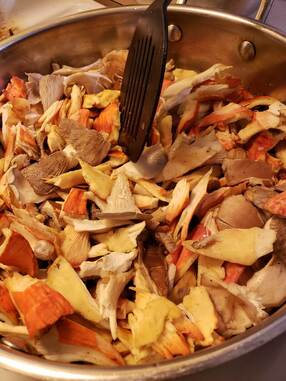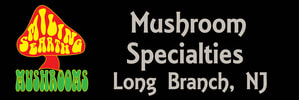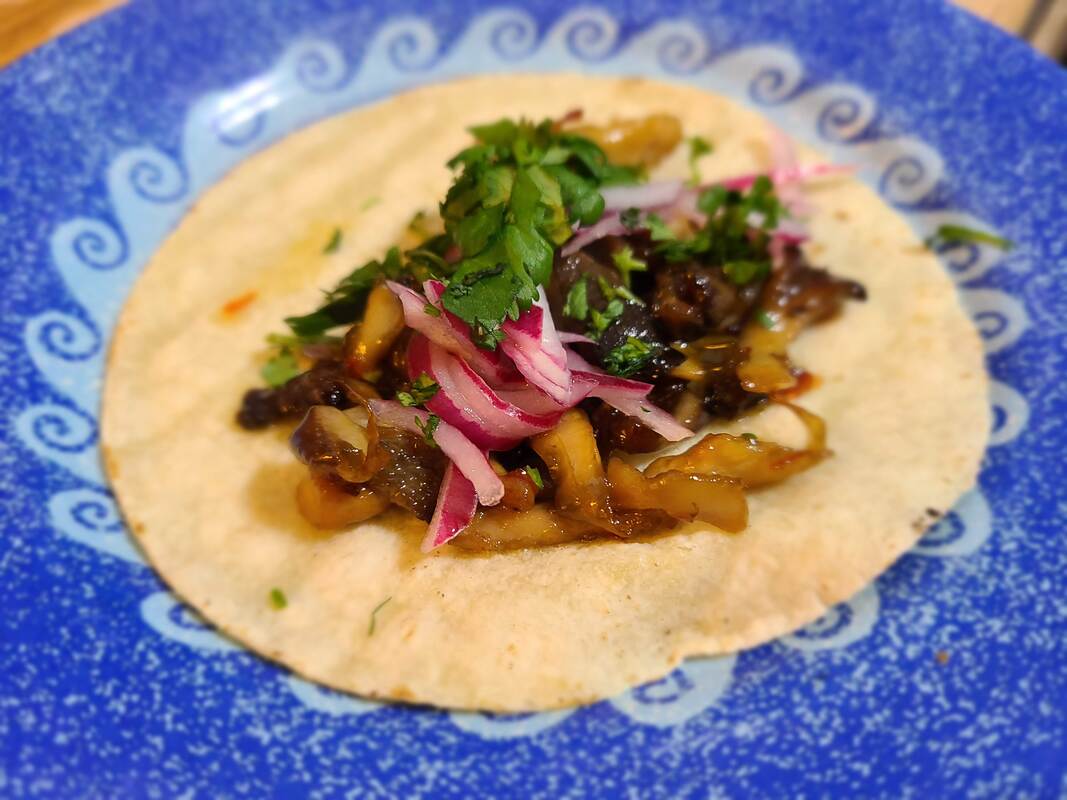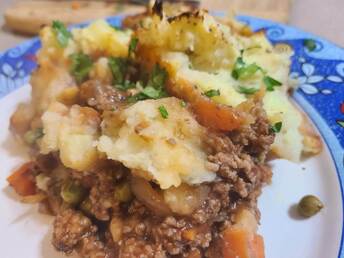Preparation
I’ve also done this without the rice, because I forgot. It made for a nice stew.
0 Comments
Preparation
Tips
Make the pickled onions ahead of time. Thinly sliced carrots, pineapple or mango could also be added. Feel free to add some other herbs to the onions. Other garnish ideas: Cilantro avocado mayo or sour cream Avocado Cotija cheese Fresh squeezed lime This is a great recipe to celebrate St. Patrick's Day , but don't limit yourself to eating this once a year!
Preparation
 Is this really necessary? Is this really necessary? It's a question I get often at the store and markets. Some raw mushrooms might be ok for you, but some might not be ok for your neighbor, some raw mushrooms might make you sick, some might really hurt you or worse. Most people have lived their entire life eating those white button mushrooms raw on a salad or with dip. Most people have had no problem from doing so. I'm included. I've also eaten some other mushrooms raw, just to taste it and see what it was like. Never a problem there either. I love some aspects of a raw food diet. Some. It just doesn't work for everything all the time. Here are some reasons why you might want to think twice about eating raw mushrooms. 1. Cooking helps to eliminate germs. Have you ever watched how people behave in the supermarket? All those fingers touching, squeezing, holding the produce to inspect it. Do you think they just washed their hands? Sure, some of the mushrooms are pre-packaged. But someone had to touch them at some point. I know, I sound like a germaphobe. I'm not. Coming in contact with germs is how you build a stronger immune system. Some vegetables, or fungi are not easy to clean. Have you ever tried to scrub every nook and cranny of broccoli or lion's mane mushroom? It's not easy. Ok, I've never bothered. Raw broccoli contains all sorts of vitamins that are beneficial to your immune system helping you to fight germs. Cooking will also help to eliminate these germs, but might also eliminate some of those vitamins. Eating raw lion's mane, or any other mushroom for that matter will not do anything for your immune system because of chitin.  https://en.wikipedia.org/wiki/Chitin https://en.wikipedia.org/wiki/Chitin 2. Cooking breaks down chitin. What is chitin you ask? Chitin is a fibrous substance consisting of polysaccharides (sugar) and forming the major constituent in the exo-skeleton of arthropods and the cell walls of fungi. It is similar to keratin which is the protein that helps form your hair and nails. Both are polymers whose function is to protect the soft tissues inside of cells. Chitin is beneficial and a great source of fiber, prebiotics and antioxidants. The problem is, humans do not have the ability to break down chitin. So, if we can't break down chitin, how can we get to all the goodies inside the cells that the chitin is trying to protect? Well, in the case of mushrooms, it can be broken down by adding heat, or cooking them. 3. Cooking helps bring out the flavor of mushrooms. Now that the chitin is broken down, the vitamins, and other stuffs that make up mushrooms are able to be released. Some of those stuffs are flavor compounds. I've found that the texture improves too. The raw mushrooms I've eaten tend to be fibrous, leaving things stuck all over your teeth and throat. Can you overcook mushrooms? And won't the nutrients get cooked off? It's hard to overcook mushrooms, unless of course you burn them. Sometimes they can become tough when cooked too long, but your eyes will probably tell you their done before that point. Vitamin C is the only nutrient that will be cooked off. Just go eat an orange, you'll be ok. 4. Wild mushrooms. When it comes to wild foraged mushrooms, there are many reasons to cook them. These mushrooms were out in the wild, with all kinds of other wild things. Wild things that have a different idea of cleanliness and life. Bladder control and the idea of not shitting where you eat is not a priority. See above, #1...  Definitely cook this Morel! Definitely cook this Morel! Some wild mushrooms contain mildly toxic substances that are destroyed by cooking them. Morels being one of them. You may have heard the story a year ago where some people were poisoned at a high end restaurant in Spain. It's hard to say what the cause was. It could have been an undercooked mushroom. They were eating morels, which contain hydrazine toxins which are broken down with heat. Or it could have been a mistaken identity. Morels can often be confused with False Morels which contain gyromitrin, a liver damaging toxin. One woman died, her family survived with only gastric upset, as did 18 other diners. Individual sensitivities play a large roll. Then there is the Amanita muscaria mushroom. That iconic red mushroom with the white spots on the cap. This is not a mushroom I bother eating. These mushrooms need to be boiled and the water changed in order to break down the chemicals ibotenic acid and muscimol, which are water soluble. That seems a bit risky and a lot of work with room for error. There are so many other delicious mushrooms out there, I'd rather enjoy!
Many mushrooms in the Agaricus family (white buttons, portabellos, cremini, contain agaritine. Agaritine is a weak carcinogen. By weak, I mean that you have to eat A LOT of mushrooms. It also is broken down very easily through oxidation, cooking or freezing. The verdict is still out on whether or not we should worry about this. Much of the testing has been in labs with very large amounts in a short period of time. Some mushrooms such as boletes, chanterelles and honeys will likely lead to gastrointestinal irritation if you eat them raw. I've also found research that shiitakes can cause allergic dermatitis in some people if eaten raw. |
AuthorWe're a couple of mushroom fans. We grow mushrooms. We cook mushrooms. We create mushroom snacks. We forage mushrooms. We sell mushrooms to chefs. We sell mushrooms to the public. We study mushrooms. Amateur mycologists. Archives
December 2022
Categories
All
|





 RSS Feed
RSS Feed